#Auditorium-Calicut
Text
9 Historical Places In Kerala, India
Located within the Malabar coast, Kerala stretches approximately 373 miles (600 kilometres) along the Arabian Sea coastline. Explore the lush beauty of Kerala with our top-rated Best kerala tour packages from Delhi, featuring serene backwaters, exotic wildlife, and vibrant culture.

This kingdom in India sits on a median region of 150,000 rectangular miles (38,863 square kilometres). This area is known for having a number of the oldest forts consisting of the Fort Kochi, Bekal Fort, Palakkad Fort, and lots of more. Moreover, points of interest including museums, eating places, enjoyment parks, boutiques, and shopping shops also are available. Other activities to indulge in encompass boating, trekking, camping, fishing, sightseeing, and lots of different brilliant stuff. Read on for extra facts approximately the first-class historical locations in Kerala, India, for an thrilling vacation revel in.
1. Tellicherry Fort
Located in a beautiful location in Kerala, Thalassery Fort turned into among one of the maximum dominant European buying and selling centres throughout the 18th century. The monument is nestled zero.5 miles simply (zero.9 kilometres) from the railway station and 60 miles (ninety six kilometres) from Calicut International Airport. The citadel has a relaxed ecosystem with underground hiding locations, caves, and waterways. The vicinity additionally has a nicely-maintained garden and ancient gear utilized by the British colonialists. This great traveler vacation spot is good for a own family excursion, buddies trip, and romantic couples holiday.
2. Fort Kochi
Fort Kochi is a place sitting adjacent to the Arabia sea inside the fascinating Kerala area. This region in the metropolis of Kochi become to begin with a fishing village in the course of the pre-colonial era and in a while taken into consideration as a trading centre. Many exceptional systems with Portuguese, Dutch, and British structure can be visible round this vicinity. Foodstuff and spices inclusive of cinnamon, cloves, pepper had been cultivated and outsourced by using Chinese and Arab traders to areas in Europe and the Middle East. This location is effortlessly available via water or road and it's far an ideal visitor destination for unwinding.
3. Bekal Fort
The Bekal Fort turned into constructed throughout the 17th century by means of an impressive leader of Keladi. This citadel is the largest within the place and sits on a massive piece of land near the Arabian sea. The view of the ocean and the lovely beach from the citadel is scenic. The castle is smooth and well maintained and surrounded by means of a huge perimeter. The castle has a past records of effective achievements and superb structure. The status quo is situated approximately 40 miles (65 kilometres) to Mangalore.
4. Palakkad Fort
Situated inside the southernmost a part of India in a town known as Kerala, is the historic Palakkad Fort. The fort was initially constructed inside the eighteenth century as extraordinary troops tried to take over and rule the buying and selling routes. This ancient visitor destination has a scenic surroundings with a properly-maintained lawn, waterways, and historical tools utilized by the occupants of the castle. The monument additionally has a shrine and a unique cell wherein inmates have been stored. This region also has a youngsters’s park, a cricket stadium, and an open-air auditorium. Welcome.
5. Dutch Palace
The Dutch Palace also known as Mattancherry Palace was first built within the sixteenth century by the Portuguese and became afterward renovated by using the Dutch. This monument became blanketed inside the listing of heritage web sites by UNESCO for its contribution to the history of this vicinity. The palace has scenic work of art depicting Hindu’s tradition, faith, and panorama. Ancient objects along with cash, umbrellas, garments, and ivory are a number of the matters located in this location. The establishment is positioned close to Paradesi Synagogue, Pazhayannur Bhagavathy Temple, and antique shops in beautiful Kerala vicinity.
6. Thripunithura Hill Palace Museum
Thripunithura Hill Palace Museum is a historic museum positioned at Kochi in Kerala, India. Constructed within the nineteenth century, the museum is made of forty nine conventional Kerala architectural systems sitting on a zero.08 rectangular miles (0.22 rectangular kilometres) piece of land. The indoors carries various historical sculptures, cash, weapons, inscriptions, and artwork of the Cochin royal family. The lawn is nicely maintained and also a cemented pavement main to the entrance of the exceptional buildings inside the area. This established order is nestled 6.2 miles ( 10 kilometres) from the city centre and may be without problems accessed by way of rail or road.
7. Edakkal Caves
Edakkal Caves is a scenic area nestled about 16 miles (25 kilometres) from Kalpetta area in Kerala, India. This prehistoric web page become utilized by the early man as protection against the climate and wild animals. This vicinity turned into extensively utilized as a buying and selling path among Malabar ports and the high mountains of Mysore. The stone writings on the wall depict to have existed within the seventh century for the duration of the Neolithic guy duration. Other tools and objects utilized by the early guy additionally advocate of the prehistoric presence. Visit this popular traveller appeal with a circle of relatives or pals for a memorable excursion. Experience the enchanting charm of Kerala on Tour packages from Delhi to Kerala, embracing its pristine beaches, emerald tea gardens, and rich heritage.
8. Anchuthengu Fort
Anchuthengu Fort become constructed in the 17th century by using the British colonialist to function a signalling station for ships. The citadel become a main put up for the British within the Malabar coast location. The established order is full of diverse guns used by the British together with weapons, bastions, and a garrison with a holding capability of 400 troops. The fort was also used as a storing facility for ammunition at some stage in the Anglo-Mysore struggle of the 18th century. Come with family and buddies and research greater about the rich records of this stunning monument.
9. Thrikkakudi Rock Cut Cave Temple
A rare Shiva temple from the 8th century, near Thiruvalla, is a fascinating revel in. Such an ancient temple highlights the brilliance of architecture and establishes its archaeological significance. The whole temple has been carved out of a huge piece of rock. The architectural style is just like that of Pallavas. The spectacular stone engravings are what attracts the thousands and thousands of site visitors to this rock-cut temple.
Visit Kerala
This best traveller destination is packed with masses of fun activities, scenic landscapes, and exciting sights. Visitors flock to this vicinity annually to loosen up and unwind and take within the beauty of the foliage and ancient structure.
Suggest Read:
How to Plan Your Kerala Honeymoon
Why You Should Definitely Visit Kerala?
1 note
·
View note
Link
0 notes
Text
Best AC Halls, Convention Center & Auditorium in Calicut, Kerala
Now you don’t have to worry thinking of making your functions a memorable event. Always select a venue which will make your functions remain as a good feel in our whole life. Miami Convention Center Calicut, is the best providers of halls and ac auditoriums in Calicut for various functions like wedding, marriage reception, exhibition, seminars, banquet etc. So now its time to change to a luxury functions within an affordable rate.
#auditoriumincalicut#hallsincalicut#conventioncenterincalicut#achallincalicut#acconventioncentercalicut#acauditoriumcalicut#acauditoriumkozhikode
1 note
·
View note
Link
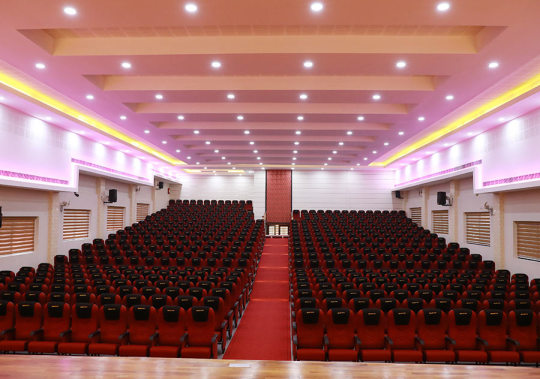
0 notes
Text
Benyamin receives Vayalar 2021 Award
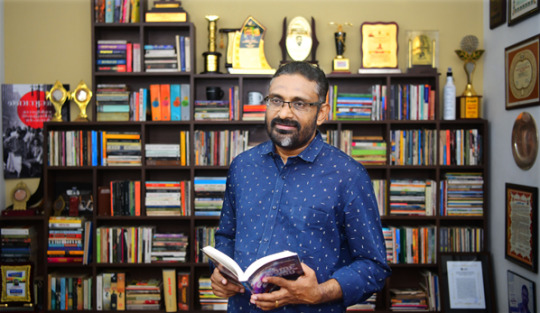
Renowned Malayalam writer Benyamin recently received the Vayalar Ramavarma Memorial Literary Award 2021 for his literary work Manthalirile 20 Communist Varshangal published in Malayalam by DC Books. He will be presented with the 45th Vayalar award on 27 October 2021 at Nishagandhi Auditorium in Thiruvananthapuram. The prestigious accolade includes a cash reward of Rs 1 lakh, a felicitation letter by Vayalar Memorial Trust office, and a bronze sculpture chiseled by noted Indian carver Kanayi Kunhiraman.
Manthalirile 20 Communist Varshangal is a political satire set around an ordinary village Manthalir which observes the impact of religion and politics on the culture of Manthalir over a period spanning two decades. The Vayalar award jury this year consisted of writers Dr George Onakkoor, Dr C Unnikrishnan and KR Meena.
[caption id="attachment_30092" align="alignleft" width="200"]📷 Manthalirile 20 Communist Varshangal published in Malayalam by DC Books. Photo Amazon[/caption]
Malayalam daily Mathrubhumi reported that Benyamin feels blessed and happy to have received the Vayalar award for the book that contains the essence of his soul. He added that 20 Communist Varshangal is a book that is close to his heart because it is a work that was created by mapping the political scenario which he witnessed while growing up and his perspective towards the ideologies in the Travancore region at the time.
The Vayalar Award, instituted in 1977, honors the celebrated Indian poet and lyricist Vayalar Ramavarma (1928 - 1975). The award will be presented to Benyamin on 27 October, which also happens to be Vayalar’s death anniversary.
Previous winners of the prestigious Vayalar Award include MT Vasudevan Nair (1985), OV Vijayan (1991), M Mukundan (2003), and KR Meera (2014), KV Mohan Kumar (2018), V J James (2019), and Ezhacherry Ramachandran (2020) among other notable writers.
Benyamin – a serial award-winning author
Benyamin’s literary accomplishments include 18 books comprising novels, short story collections, travelogues, and memoirs in Malayalam. The English translation of his book Mullappooniramulla Pakalukal by Shahnaz Habib called Jasmine Days won the inaugural JCB Prize for literature in 2018. It describes the tale of a woman’s move to a middle eastern city amidst the Jasmine revolution. The work received the Crossword Book Award in 2019 and was long-listed for the 2020 International Dublin Literary Award.
Benyamin’s most popular work till date Aadujeevitham (Goat Days), the hard-hitting true story of a migrant worker in Saudi Arabia, has crossed over a hundred Malayalam reprints. The English translation by Dr Joseph Koyippally, Goat Days not only made it to the lists for Man Asian Literary Prize 2012 and DSC Prize for South Asian Literature 2013 but also won the Kerala Literary Academy Award in 2009. The novel is said to have been originally penned for Malayalam magazine Mathrubhumi.
Aadujeevitham has been translated into numerous languages including Nepali, Odia, Tamil, Kannada, Arabic, and Thai. Goat Days, as the English translation is titled, enjoys the rare distinction of being used as a textbook in schools and universities including Bharathiar University, Kerala University, Pondicherry University, Calicut University, and the Kerala state 10th standard school syllabus.
Benyamin’s short story collection Euthanasia won the first Abu Dhabi Malayalam Samajam prize. The celebrated Malayalam author has also won the Muttathu Varkey Award 2019 and Padmaprabha Literary Award 2015 for his immense contribution to Malayalam literature. The Atlas Kairali Story Award, Abu Dhabi Sakthi Award, and Norka Roots Pravasi Literary Prize are other feathers in Benyamin's cap.
0 notes
Photo
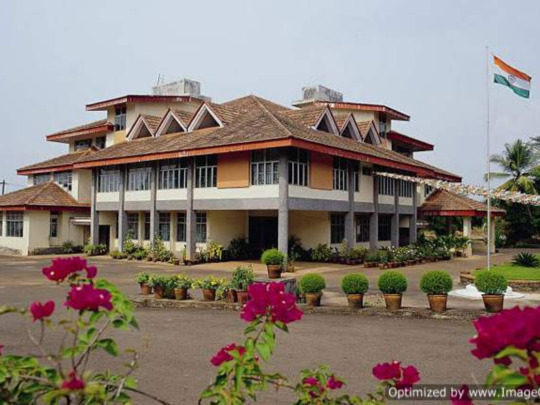
National Institute of Technology - [NITC], Calicut
It is a deemed university by virtue of the legislation officially recognized in 2002 by the National Institute of Technology - [NITC]. The institute maintains a high level of student development, so most of the courses have similar syllabuses and they are approved by AICTE. From 200 students in its initial years to more than 1000 students in 2011, NIT Calicut has improved its courses and intake capacity dramatically.
In addition to the gym, swimming pool, and eleven departments, there are also a number of facilities on campus. At the institute, 41 courses can be found at both UG and PG levels. Eleven departments offer master's and bachelor's degrees in sciences, engineering, and technology, and eight centers work together to provide a seamless educational experience. Central Library and computer center, Incubators and Research Labs, Dedicated School for MBA, Sports, Hostel & Mess, Wi-Fi, other facilities such as open-air theatre, auditorium, medical assistance.
https://www.cheggindia.com/university/national-institute-of-technology-nitc-calicut-10954/
0 notes
Link
#wedding venues#Wedding Venues in Chennai#Wedding Venues in hyderabad#wedding venues in bangalore#wedding venues in delhi#wedding venues in mumbai
0 notes
Link
Acoustical Soundproofing Fabric Wrapped Wall Panels For Sound Absorbtion offer ideal sound solution for noise control and sound absorption for office soundproofing, residential soundproofing, conference hall soundproofing, Auditorium soundproofing, Cinema soundproofing, home theater soundproofing, recording studio soundproofing by acousticxal soundproofing contractors, consultants, engineers in Bangalore, Chennai, Hyderabad, Cochin, Mangalore, Calicut, Trivandrum.
0 notes
Text
We Need to Talk about the Modernism Fetish in the Gulf
fet·ish. ˈfediSH/: “… an object of irrational reverence or obsessive devotion”
Prologue
An assortment of headlines in UAE based, English language publications lamenting the loss of ‘historical structures’ and ‘icons.’
“Original Hard Rock Cafe in Dubai demolished after 15 years.” (built in 1998) “A Facebook campaign called Save the Hard Rock Cafe attracted about 6,000 supporters.” -- The National. January 28, 2013
“Dubai television tower demolished: The aging Jumeirah television tower was demolished on Friday, bringing an end to one of Dubai's iconic structures.” (Built in 1986) -- Gulf News, June 28, 2008
“End of the road for Dubai's Metropolitan hotel. Metropolitan hotel, one of Dubai's oldest hotels, is to be demolished next year.” (Built in 1978) -- The National. November 29, 2011
“Dubai's Metropolitan Hotel demolition: Heartache for people who made the job their life. The Metropolitan Hotel, which is due to be demolished, was like a family for many who worked there.” -- The National & Gulf News. March 8, 2012
“Dubai’s landmark ‘Sana Building’ to be pulled down. 35-storey twin tower to replace the iconic building in Dubai's Karama area.” (built around 1987) -- Gulf News. January 11, 2017

Figure 1. Clockwise from top left: Hard Rock Cafe; Jumeirah Antenna; Sana Building; Metropolitan Hotel
In 2014 at a fully packed NYU-AD auditorium I was participating in a panel put together by the publisher of the Abu Dhabi Architectural Guide.[1] A compendium of modernist buildings (anything built after 1966, more or less) its stated aim was a documentation of the city’s architectural heritage thus disputing the claim that Abu Dhabi has ‘no history.’ In my opening remarks I cautioned against the fetishization of buildings, i.e. the notion that one can become enamored with a structure, simply because it was built in the ‘past’ (the word past here needs to be taken with a great deal of caution) and thus elevate it to the status of sainthood. As an example I mentioned the Abu Dhabi Bus Terminal which opened in 1989 and was designed by a Bulgarian architectural outfit. It has acquired in the minds of the modernist brigade a kind of respect and reverence usually associated with Gothic cathedrals. To my mind it is not a particularly interesting building. Known mostly for its quirkily curved concrete canopy extending over the bus stops, and painted in a garish green color, it stands in opposition to its surroundings, visually speaking.
Talking about surroundings, the structure makes no gesture whatsoever towards the city in which it is located. The bus station is surrounded by a fence and is set back from the street and can thus be seen only from a distance. Surrounding open spaces are occupied by workers on many evenings imbuing it with a sense of informality largely absent from the city, and also suggesting the potential for such a building in attracting a larger segment of the population and becoming a vibrant social hub. Given all that, I argued that it is probably best if the building is demolished and a more appropriate replacement takes its place. A kind of porous urban structure as seen in many other parts of the world.

Figure 2. The Abu Dhabi Bus Terminal set back from the street. Source.
Having made that statement you could literally hear an inaudible gasp from the audience. It seems that I had defiled the holy grail of Abu Dhabi architectural modernity. It pretty much went downhill from there. Angry denunciations followed informing me about the building’s synthesis of both the Frank Lloyd Wright Guggenheim Museum in New York City and the Eero Saarinen Washington, DC airport terminal (why is that a good thing?); others pointed out that such views (mine) are reflective of a kind of drive-by mentality which does not understand the inherent beauty of the building (which was kind of my point, its remoteness and distance); or that Abu Dhabi is losing so much of its history that we need to preserve whatever is left (even if it is functionally inefficient, or lacks any connectivity to the city). A particularly irate audience member went off on a tangent and denounced modernism as a category (because I had mentioned in passing that modernism had admirable social goals); others (actually only one, in a face-to-face conversation after the event) praised my bravery for refusing to turn the city into some sort of fossilized version of itself (however hard that maybe in the case of Abu Dhabi). It seemed that I had touched a raw nerve – and in an attempt to placate an increasingly angry mob I noted that my comments were made partly in jest to make a larger point about modernism.
youtube
Video of the Event. Standard Disclaimer: Actual events may not correspond directly with my own hazy recollections.
What this episode illustrates though is that in the Gulf, and indeed throughout the world, modernism is making a strong comeback. In recent years there have been many initiatives and exhibitions that celebrated modernist ‘achievements.’ For instance the theme of the UAE National Pavilion at the 2014 Venice Architecture Biennale, was ‘Lest we Forget’ a nostalgia tinged celebration of the countries’ architecture, largely focused on what was produced in the 60s and 70s. A hit-parade of favorite buildings, masterplans and amusing anecdotes about the countries’ founders thus sustaining some sort of founding myth. Other efforts followed, such as the documentation of Sharjah’s modernist heritage. Accordingly, anything built in that golden age of modernism and has a slightly worn out look with curiously looking concrete apparitions is declared as a worthy masterpiece. I have been complacent in this as well, introducing the UAE Modern initiative in 2012, an educational project whose aim was to map modern architecture in the UAE. It had its share of trophy buildings – the World Trade Center, the Hilton Hotel in Al Ain – although in my defense students also examined other, less spectacular structures such as the New Calicut Hotel in Khorfakkan, the Breeze Motel in Kalba, gas stations, health centers and schools. None are particularly remarkable and may not be worthy of a second look by hardcore modernist aficionados. Yet they are a significant component of an Emirati Vernacular – an architecture that is derived and inspired by its users and inhabitants – rather than a top down version of an expatriate architect’s fantasy about what constitutes Emirati identity.

Figure 3. Timeline of remarkable buildings in the UAE. As shown in the UAE Pavilion at the 2014 Venice Architecture Biennale. (Source: Author)
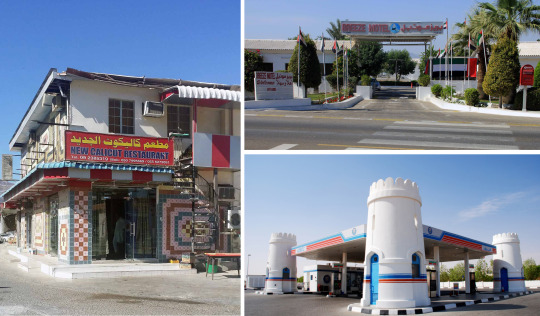
Figure 4. Less remarkable buildings in the UAE. Clockwise from left: Calicut Hotel; Breeze Motel; a Gas Station. Source: UAE Modern
Such interest in glorifying and valorizing various modernisms is to some extent inspired by what is happening throughout the Arab World. For example, a center in Beirut that wants to be a repository of modern Arab architecture; in Cairo an architectural observatory outfit is engaged in a kind of navel-gazing of the city’s ‘golden architectural age’ – whatever that is. Numerous Facebook pages look at life in the ‘good old days.’ Some of those have found their way into a Gulf based architectural discourse. For instance the Bahrain Pavilion at the 2014 Venice Architectural Biennale is a homage of sorts to Arab Modernism designed and curated by folks from Beirut. This does of course raise the issue of context (and history). Clearly though no one can dispute the value of documentation, mapping and archiving but if they are not situated in a larger critical discourse can easily become tools for a more sinister agenda that seeks to dismantle the old and usher in a neo-liberal urbanity that furthers inequality, increases alienation and promotes a sense of transience and temporariness. By focusing on a few token buildings and structures, claiming that they are part of the nation’s ‘heritage’ and incurring a protective status on them, more serious damage is done to buildings that are more valuable socially and culturally.
There are countless examples for this. Consider the Central Market in Abu Dhabi. While modernist in appearance it transformed into an informal affair, bringing together a diverse group of residents. Or the Mulla building in Electra Street, Abu Dhabi. An unremarkable building from the 1980s, it was a gathering area for the city’s marginalized South Asian population containing an arcade that was a piece of South Asia in the middle of an Arab Gulf city. Both are not known for their outstanding or quirky architectural qualities but for their performative social roles. Both were demolished recently to be replaced with high-end developments that cater to the rich and privileged, furthering inequality and an overall sense of transience. But all this is good though because we have listed the bus stop as a modernist icon, so we are off the hook, in a manner of speaking.
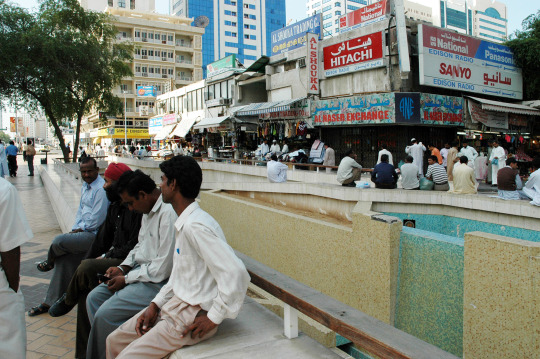
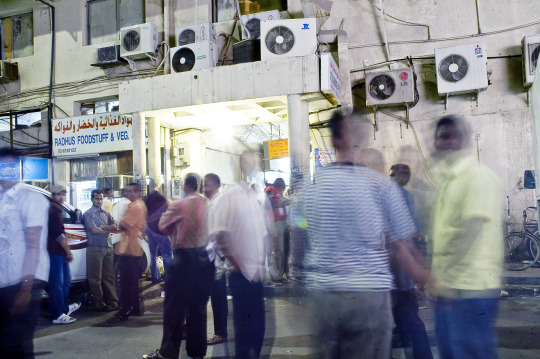
Figure 5 & 6: The Abu Dhabi Central Market in 2004; and the Mulla Building 2008. Source: Author
The case of the UAE Sha’bī (or National house) is of particular relevance. It was the theme of the UAE Pavilion at the 2016 iteration of the Venice Architecture Biennale, which I curated. From the outset I sought to distance the exhibition from a nostalgia inspired presentation about the ‘good old days’ to one that highlights contemporary transformations. My focus was on how residents transformed their ‘modernist’ homes to make them compatible with their lifestyles and habits. It is not a glamorous architectural form or one that would attract the pages of glossy magazines yet it achieves a quality that is indigenous since it is a direct outcome of residents needs. It thus stands in defiance to the top down version of modernism. An architecture without architects – a true expression of a societies culture. This particular building type has received the attention of heritage conservationists but has as of yet to receive any sort of official recognition as a significant element in the nation’s built heritage. More significantly countless Sha’bī neighborhoods are left to decay and crumble, acquiring a slum-like status, a place to be shunned and filled with undesirables.
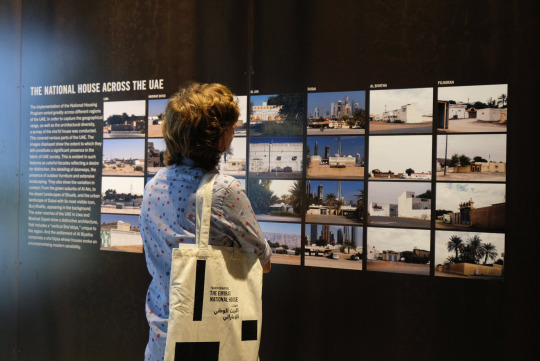

Figure 7: The UAE Sha’bi house across the nation; displayed during the 2016 Venice Architecture Biennale at the UAE National Pavilion. Figure 8: A deteriorating Sha’biyya neighborhood in Al-Ain. Source: Author
Things are not as dire as these examples may indicate however. In fact there are some success stories such as the preservation of the modernist Abu Dhabi Cultural Foundation. [2] Aesthetic qualities aside that building’s main value derived from being a social hub for the city’s residents (Emirati and expatriate alike) who banded together to save it from demolition. Moreover the building is not simply an object to be acquired like a luxurious car but it performed a significant role in the life of the city and was open to its streets with various passages linking it to the city.

Figure 9: The Abu Dhabi Cultural Foundation. A structure that is connected to the city. Source: Author.
At some level such an interest in modernism is quite curious. After all during the 1970s and 80s modern architecture was strongly maligned. All sorts of social ills were ascribed to this particular brand of architecture. Its monotony and simple forms were associated with a mind-numbing sameness and alienation among city dwellers. The abolition of walkable streets and communal spaces in favor of efficient highways was correlated will all sorts of urban problems such as crime. Writers, scholars and acitivist bent over backward decrying the evil that is modern architecture: Tom Wolfe in “From Bauhaus to Our House,” Robert Venturi’s “Learning from Las Vegas’ and of course the holy grail of anti-modernist city planning Jane Jacobs’ “Death and Life of Great American Cities.” At some point though over the last few years a shift happened. Worldwide there has been a resurgent interest in all things modern – architecture and otherwise. Mid-century modern became a style to be admired – furniture from that period acquired, adapted and placed in contemporary homes. Media joined the bandwagon – TV shows looking at the 1960s period highlighted its streamlined aesthetic and bright colors in shows such as “Mad Men” in which protagonists are seen wearing sleek suits, driving Cadillacs and entertaining in open air floorplans contained in Miesian skyscrapers. The 1950s and 60s were cool again.
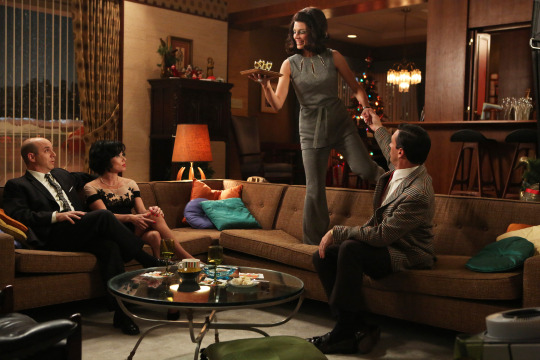
Figure 10: Don Draper’s 1960 living room in ‘Mad Men.’ Mid-centruy modernist nostalgia. Source.
At an architectural level Brutalism in particular, with its aesthetically pleasing, overtly expressive concrete forms, captured the attention of many architecture aficionados. Websites such as “fuckyeahbrutalism” are filled with countless examples of buildings following this style popularized in the 1960s. Subject to demolition and replacement, efforts are made for preservation, although as some critics have pointed out the revival is a form of commodification that stands in opposition to the movement’s original progressive social agenda. [3] Yet aside from speculative motifs are there other explanations for looking to the past? Postmodern theorist Andreas Huyssen notes that there has been an “explosion of memory discourses at the end of the twentieth century.” [4] Others evoked the notion of an “invention of tradition,” a psychological device through which some aspects of the past are rejected to “validate the new, but sometimes also the retention of the past as ‘other’ as a continuing proof of the superiority of the new.” [5] Thus, a deep dissatisfaction with the present prompts a kind of collective effort to reminisce about the past.
How does the Arab Gulf fit in all of this? How can one explain the obsessive interest by some in preserving and mapping all things ‘modern.’ Is it simply a matter of copying what happens elsewhere in the region and the world? Or are there other factors at work? For longtime residents in the transient cities of the Gulf, evoking such nostalgic recollections may act as a form of resistance to obsolescence and disappearance. A counter narrative to temporariness. For Emiratis it may well be an attempt at creating an architectural heritage, a tradition of building that shows their society as equal to places elsewhere. This is irrespective of the fact that all of these ‘modernist buildings’ were built and designed by foreign architects. And they do not constitute a form of colonial architecture blending indigenous building traditions with modernist influences given the historical context of the region.
Rashad Bukhash, former head of conservation at Dubai Municipality and former member of the UAE Federal National Council is a champion of preserving the UAE’s architectural heritage. In a debate at the council he was questioned by a colleague about whether “there was an Emirati architectural style.” I have personally witnessed participants in workshops debating the very existence of an indigenous built heritage and the meaning of an “Emirati Identity.” Recently an Emirati commentator noted:
Our culture isn’t to be seen in buildings or items of art. We didn’t have museums, opera houses, government buildings or palaces. Our culture is to be found in our oral traditions, values, language, poetry and the history that has been handed down from generation to generation.
This notion of associating one’s culture with the expectations of others is problematic. Another Emirati commentator questions the need for utilizing foreign architects in designing such significant structures as the monument for fallen UAE soldiers in a CNN Arabic piece titled: “Why is it better to design the National Commemorative Monument by a Khaliji designer” (as opposed to the British national who was selected). These are important questions and a debate needs to take place about such matters. The Gulf has its own unique qualities and cultural traditions. An architecture will ultimately emerge that will reflect this – but for that to happen tools need to be provided, and a framework created, which would allow for a free expression of lifestyle, needs and activities (e.g.: proper architecture schools that are not western imports headed by outsiders; architectural societies that promote and engage in critical debates; an examination and celebration of an Emirati vernacular architectural tradition). Such a discourse is more meaningful, more sustainable and more relevant than simply enumerating and listing modernist imports that may or not be useful but that are not from this land. It is time to look to the future rather than the past and to empower Emiratis with the tools needed to participate in the production of their own built environment.

Figure 10: Head of the Meqbali household nurturing the garden of his Sha’bī house in the 1980s. When architecture fades and a house is transformed into a home. Source: NPUAE
Notes
[1] Menoret, Pascal (ed.). The Abu Dhabi Architectural Guide. Abu Dhabi: NYU-AD, FIND
[2] Designed by Iraqi architect Hisham Ashkouri, who was part of TAC (The Architects Collaborative) a Cambridge based firm founded by modernist icon Walter Gropius.
[3] Catherine Slessor (2017). “Brutalism is back – but its fetishisation comes at a cost”
https://www.royalacademy.org.uk/article/opinion-architecture-brutalism-and-the-future-of-housing
[4] Huyssen, Andreas. Present Pasts : Urban Palimpsests and the Politics of Memory, Cultural Memory in the Present. Stanford, Calif.: Stanford University Press, 2003.
[5] Dennis, Richard. Cities in Modernity : Representations and Productions of Metropolitan Space, 1840-1930, Cambridge Studies in Historical Geography. Cambridge ; New York, NY: Cambridge University Press, 2008.
0 notes
Video
youtube
Majestic Auditorium Halls Calicut
Welcome to MAJESTIC AUDITORIUM/HALLS, one of the most sought after Marriage Auditorium in Calicut, playing host to memorable Wedding Halls, Receptions Halls, Conferences Halls, Various Celebrations Halls, Banquet halls, Award Function, College Fiest/Programme, Official Seminars, Events Halls, Party Halls, Exhibitions Halls, Meeting Halls, Birthday Party Halls. The auditorium has three separate halls, namely MAJESTIC, CLASSIC and PEARLS, which have been designed to elegance and prestige.
0 notes
Video
youtube
Majestic Wedding Auditorium Halls Calicut - Inaguration
0 notes
Photo

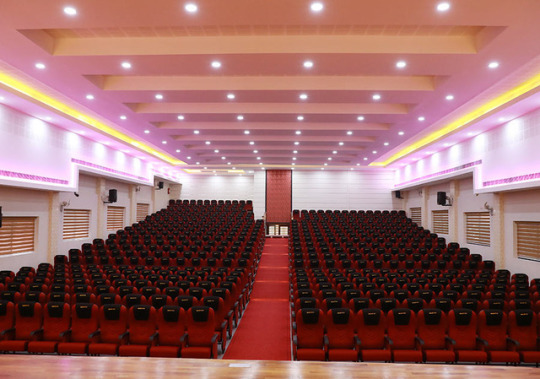
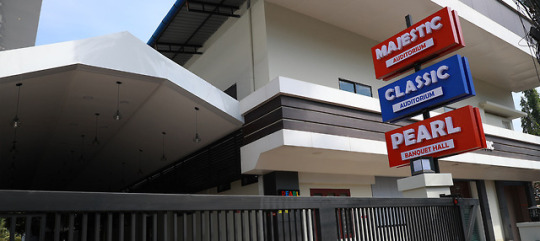
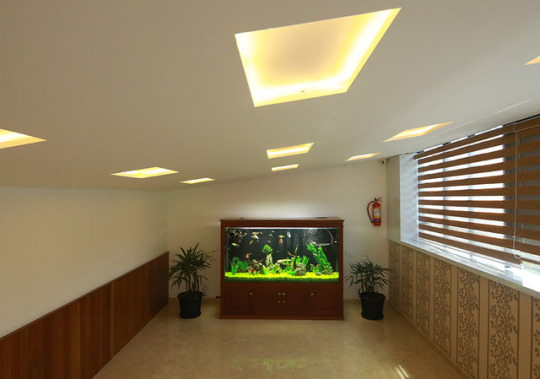
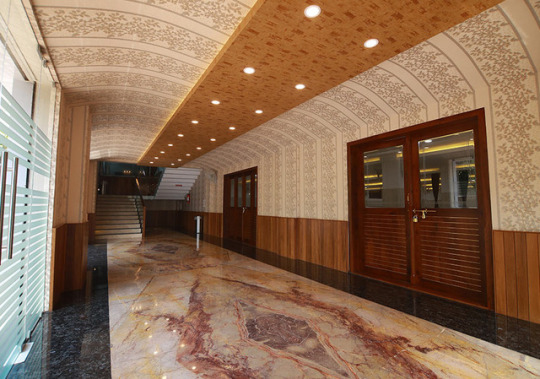
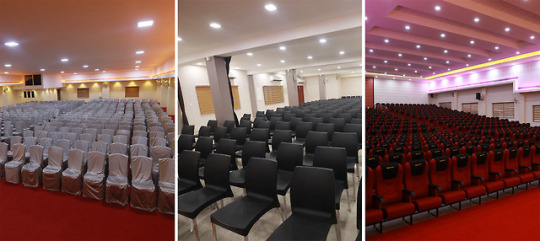
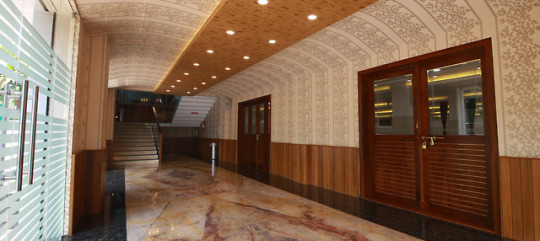
Welcome to MAJESTIC AUDITORIUM/HALLS, one of the most sought after Marriage Auditorium in Calicut, playing host to memorable Wedding Halls, Receptions Halls, Conferences Halls, Various Celebrations Halls, Banquet halls, Award Function, College Fiest/Programme, Official Seminars, Events Halls, Party Halls, Exhibitions Halls, Meeting Halls, Birthday Party Halls. The auditorium has three separate halls, namely MAJESTIC, CLASSIC and PEARLS, which have been designed to elegance and prestige.
#hallsincalicut.in#auditorium_calicut#halls_calicut#wedding_halls_calicut#marriage_halls_calicut#engagement_halls_calicut
0 notes
Photo
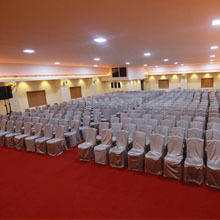


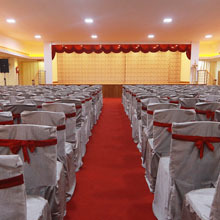


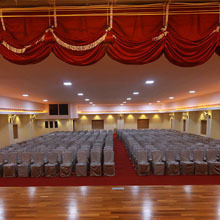
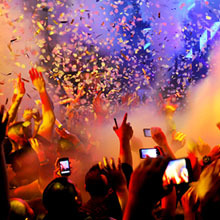
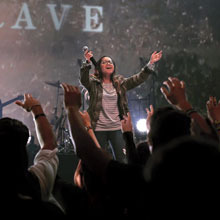
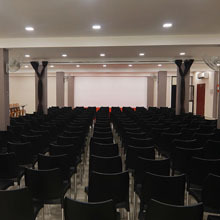
Welcome to MAJESTIC AUDITORIUM/HALLS, one of the most sought after Marriage Auditorium in Calicut, playing host to memorable Wedding Halls, Receptions Halls, Conferences Halls, Various Celebrations Halls, Banquet halls, Award Function, College Fiest/Programme, Official Seminars, Events Halls, Party Halls, Exhibitions Halls, Meeting Halls, Birthday Party Halls. The auditorium has three separate halls, namely MAJESTIC, CLASSIC and PEARLS, which have been designed to elegance and prestige.
0 notes
Link
Events Halls
Wedding Halls
Marriage Reception Halls
Award Program Halls
Award Function Halls
Marriage Halls
Luxury Celebration Halls
Press Conference Halls
Marketing Events Halls
Office Events Halls
College Campus Events Halls
Engagement Halls
Seminar Halls
Party Halls
College Celebration Halls
Birthday Celebration Halls
Office Celebration Halls
Conference Halls
Banquet Halls
Luxurious Banquet Halls
Meeting Halls
Wedding Auditorium
Birthday Party Halls
Award Party Halls
Corporate Convention Halls
Wedding Reception Halls
Trade Fairs Halls
#Trade Fairs Halls#Wedding Reception Halls#Corporate Convention Halls#Award Party Halls#Birthday Party Halls#Wedding Auditorium#Banquet Halls#Conference Halls#Birthday Celebration Halls
0 notes
Link
The auditorium has three separate halls, namely MAJESTIC, CLASSIC and PEARLS, which have been designed to elegance and prestige. The venue is offering distinctive self catering, functions, venue facilities for weddings, parties, religious meetings, Social club events, conferences and private functions. You can take advantage of free parking space when visiting the wedding hall.
Vision
We intend to offer our discerning customers, providing a perfect blend of contemporary international facilities with quality services and to open as many marriage auditoriums across the country.
Mission
To maintain everlasting relationship with our beloved customers based on the foundation of trust, integrity and transparency creating a land-mark hospitality services.
0 notes
Photo
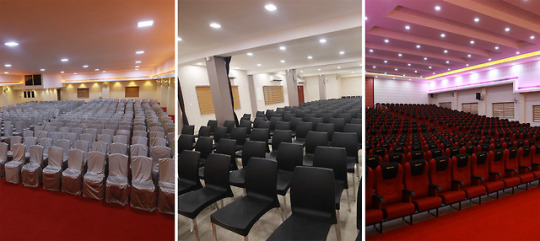
Well Furnished and Designed Auditorium / Halls
Auditorium located at Calicut town with 5 min walking distance and easy accessible location
Prking facility beside of the Auditorium/Halls itself for accommodating 75 cars
Utilized AC and Non-AC programmes/Events
Well drinking water availability
Dining Hall AC/Non AC can accommodate 400 people for dining in single sitting.
Well equipped halls with advanced sound systems
Theater seating settings with user concerned views
Exclusive bridal room available
Modern green rooms attached with stage
Specially crafted for wedding and other celebrations
Systematic Waste management
Full-fledged kitchen, Available both modern and traditional kitchen facilities
Bio gas plant Available
Centralized AC Auditorium Halls
Specially designed for business and corporate events, entertainment shows, exhibitions
small parties, seminars, meetings Halls seperate Avalable with 200 pax capacity and Centralized AC
Auditorium Halls 1000 pax capacity
#Wedding-Auditorium#Wedding_auditorium_Calicut#wedding_halls_calicut#halls_calicut#auditorium_calicut
0 notes